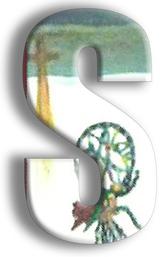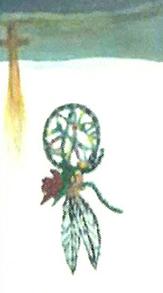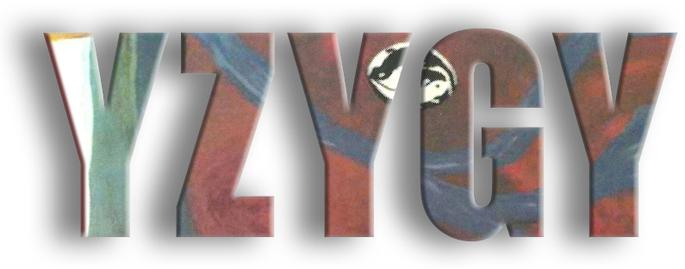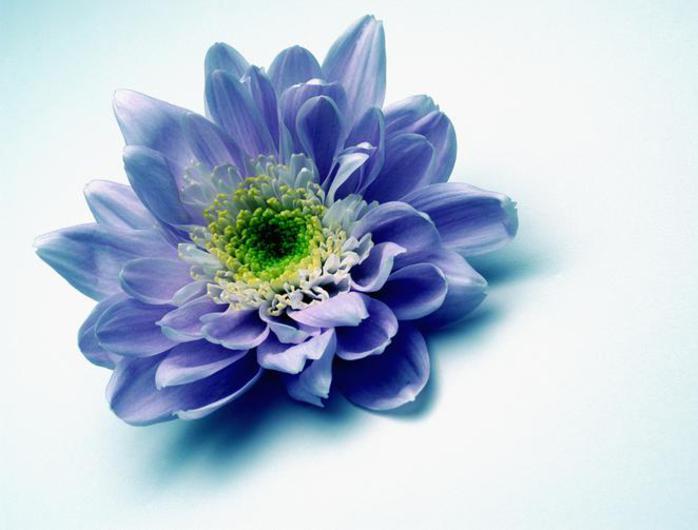MEMOIR LOGO CONCEPT: The aleph and a Sufi mystic inspired my creation and design of the syzygy logo, which I initially based on the symbolism of the yin and yang.
But the concept expanded when I first saw the aleph in Judith Cornell’s
Mandala Healing Kit, My inexplicable attraction to it led me to incorporate it into my logo before I knew what it meant.
I later read that the “Aleph (the first letter of the sacred Hebrew alphabet) embodies the primordial, divine potential of the universe. ... Aleph contains all the universe’s potential and all of its emptiness simultaneously. Aleph represents a dynamic process of movement from unity to diversity and back to unity,” Jennifer Judelsohn, Songs of Creation.
And the mystic poet Rumi inspired me to use the fire and water concept after I read The Question. Here is an excerpt:
“The presence is there in front of me. A fire on the left, a lovely stream on the right.
One group walks toward the fire, into the fire. Another toward the sweet flowing water.
No one knows which are blessed and which are not.
Whoever walks into the fire appears suddenly in the stream.
A head goes under water, and that head pokes out of the fire.”
LOGO ART: Cropped fire and water images from Free Images.
LOTUS LOGO: In spiritual and religious literature, “the lotus is a symbol for the macrocosm and the microcosm, the universe and man. The lotus represents the divinity of the cosmos as well as the divinity of man.
The lotus is the center of the infinite, omnipresent consciousness which connects with the consciousness of the universe. Through the intuition, one of man’s divine gifts, the spiritual student can see the infinite, omnipresent consciousness as the lotus flower within himself.”
LOTUS ART: Courtesy
Homestead, my website service provider. (Temporary art while I design of my own lotus logo.)
TO DOWNLOAD FREE SAMPLE CHAPTER OF SYZYGY:
THE MEMOIR
TO BUY MEMOIR
(Thru Amazon)
THE MEMOIR
CROSSING THE BRIDGE TO SELF
THE WEBSITE
THE MEMOIR
NEW!
Zeus commissioned Apollo, the god of sun, music, and poetry, to give man a sense of spirituality, a hunger to individuate. As you might gather from this website, the Apollonian way—the search for Self—aptly describes me, an NF, the intuitive-feeling type. Keirsey-Bates found it difficult to define the nature of the NF: “Indeed so extraordinary is his goal that not even the Apollonian can talk about it in a straight-forward way. It defies his description,” a truth that has frustrated and bewildered me my whole life. (View original art source.)
SOURCES
[1] Keirsey and Bates, Please Understand Me, p. 3.
[2] Ibid., p. 29.
[3] Ibid., p. 3.
Pre-History: Zeus. According to Greek mythology, Zeus commissioned four gods to imbue man with four characteristics to make them more godlike: Apollo to give man a sense of spirit, Dionysus to teach man joy, Prometheus to give man science, and Epimetheus to convey a sense of duty.
c. 490–c. 430 B.C.: Empedocles. A Greek pre-Socratic philosopher who is best known as the originator of the cosmogenic theory of the four Classical elements: earth, fire, water, and air.
c. 469 B.C.–c. 399 B.C.: Socrates. Greek philosopher who used examples of psychological conflict to distinguish the human functions: the rational part is thinking, the spirited part the experience of emotions, and the appetitive part the pursuit of bodily desires.
c. 460 B.C.–c. 370 B.C.: Hippocrates. Greek physician often credited with applying the concept of the four humors, or the doctrine of the four temperaments, to his medical theories, hypothesizing that too much or too little of the four body fluids affect human personality traits and behaviors. The four body fluids with their ancient corresponding temperaments are as follows:
- black bile (earth): melancholic or despondent, sleepless, and irritable;
- yellow bile (fire): choleric or easily angered and bad tempered;
- phlegm (water): phlegmatic or calm and unemotional;
- and blood (air): sanguine or courageous, hopeful, and amorous.
Although biochemistry has since debunked Hippocrates’s hypothesis (finding that an imbalance of hormones rather than an imbalance of body fluids influences one’s temperament ), modern psychology continues to construct personality type systems using four or more categories similar to those developed by Hippocrates.
c. 427 B.C.–c. 347 B.C.: Plato. Greek physician and philosopher who named Hippocrates’s four temperaments after cardinal virtues: wisdom, courage, justice, and moderation.
A.D. 129–c. 200/c. 216: Galen of Pergamon. Roman (of Greek ethnicity) physician, surgeon, and philosopher whose theories dominated and influenced Western medical science for more than 1,300 years. Greatly influenced by Hippocrates’s theory of humorism, Galen contributed a substantial amount to the Hippocratic understanding of pathology and promoted and modified Hippocrates’s typology of human temperaments:
- black bile (earth): the despondent, sleepless, and irritable melancholic was creative, kind, and considerate when in balance;
- yellow bile (fire): the easily angered and bad tempered choleric was energetic, passionate, and charismatic when in balance;
- phlegm (water): the calm and unemotional phlegmatic was dependable, kind, and affectionate when in balance;
- and blood (air): the courageous, hopeful, and amorous sanguine was extroverted and sociable when in balance.
1890s: Ivan Pavlov. According to Changing Minds, Pavlov found that dogs could be sorted into four different temperaments, according to their reactions to stress.
- Strong excitatory: Highly strung and easily excitable with moderate levels of stress.
- Lively: Very responsive to stress but reactions not as extreme as the strong excitatory.
- Calm imperturbable: Generally passive response to stress, coping well with it.
- Weak inhibitory: Reacts to stress with extreme passivity in order to avoid tension.
1907– 1920: Adickes, Kretschmer, Adler, and Spranger. Several psychologists during this period used four as a base for their theory: “In 1907 Adickes said man is divided into four worldviews: dogmatic, agnostic, traditional, and innovative. In 1920 Kretschmer said abnormal behavior was determined by the temperament similar to those of Adickes: hyperesthetic, anesthetic, melancholic and hypomanic. Thus some people are born too sensitive, some too insensitive, some too serious, some too excitable. Around 1920 Adler spoke similarly by pointing to four ‘mistaken goals’ people of different make pursue when upset: recognition, power, service, and revenge. Also in 1920, Spranger told of four human values that set people apart: religious, theoretic, economic, and artistic” [1].
1921: Carl Jung. Swiss psychiatrist and psychoanalyst, who published Psychological Types, in which he theorized that there were four fundamental psychological types and, based on clinical observation of his patients, he found these four fundamental types fell loosely into Zeus’s categories, and so for the sake of clarity he named each type after the corresponding god: Apollo (spirit), Prometheus (science), Dionysus (joy), and Epimetheus (duty) [2].
1930s: In General. The idea of temperaments to explain behavior was abandoned in favor of what was called “dynamic” psychology and “behaviorist” psychology, which looked to unconscious motives and past experiences to explain behavior [3].
1950s: Isabel Briggs Myers and (her mother) Katharine Cook Briggs. The nonscientific duo of mother and daughter extrapolated 16 types from Jung’s Psychological Types to create what became the Myers-Briggs Type Indicator. In a two-page chart of “Characteristics of Types in High School” (Myers Briggs Manual, Form E 1958), Isabel Myers briefly described the 16 types.
1970s to Now: David Keirsey and Marilyn Bates. Published Please Understand Me: Character and Temperament Types, a greatly expanded version of the MBTI and personality test that has been popularized by thousands of companies trying to improve relationships in the workplace and individuals seeking to advance their careers. Myers-Briggs’s descriptions of the 16 types accurately mirrored Keirsey’s observations as a school psychologist, and (after Bates died) he again greatly expanded and modified the types in his 1998 rewrite of the book, Please Understand Me II: Temperament, Character, Intelligence, in which he changed the names of Jung’s psychological types. But that will have to wait for another day. ♂ ♀
Classifying people into types traces back to pre-history
From Zeus to Jung: We each fit into one of four basic types
© 1955–2019 Syzygy: Crossing the Bridge to Self. All Rights Reserved.











